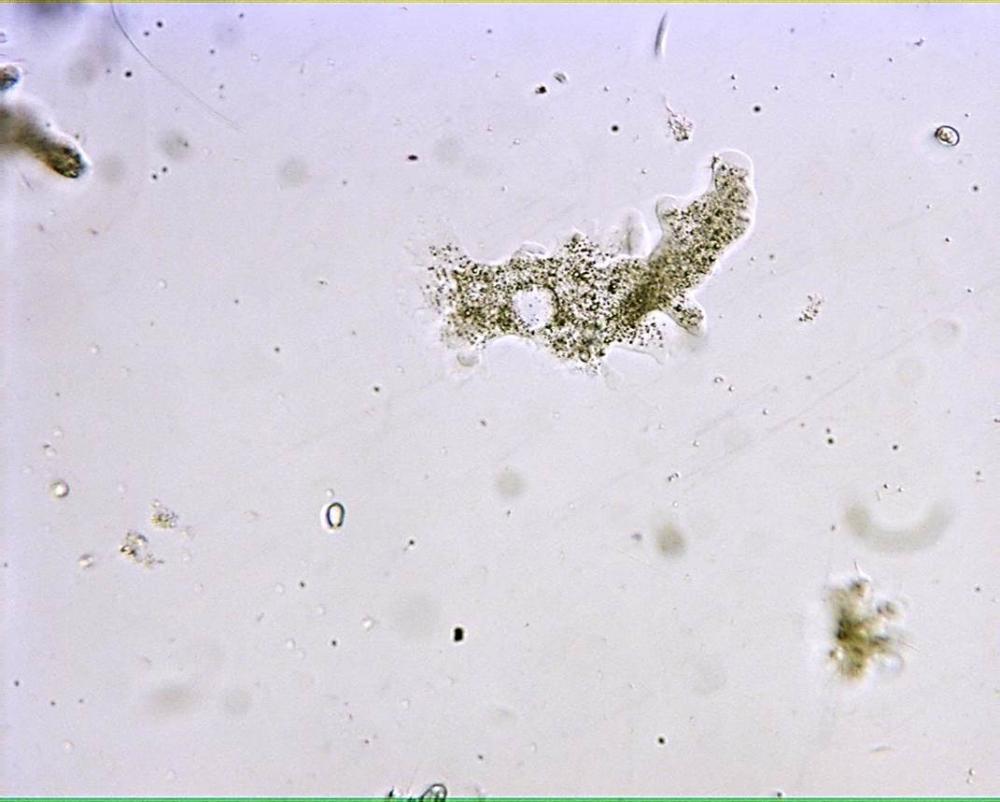Methanogens
Obligate anaerobes that can reduce CO2 to Methane (swamp gas). Belong to domain Archaea
Halophiles
Color is due to bacteriorhodopsin
Halophiles
does not have chlorophyll, so this is not photosynthesis (uses carotenoids)
Halophiles
Have simplest form of photophosphorylation
Heterocysts
specialized cells which "fix" atmospheric nitrogen into ammonia. specialized because they have a modified cellular structure that allows them to protect the nitrogen-fixing enzymes from oxygen. The nitrogenase enzyme responsible for converting nitrogen gas into ammonia is highly sensitive to oxygen, and in normal photosynthetic cells of cyanobacteria, there is a high oxygen concentration due to photosynthesis. Even though the oxygen-sensitive Nitrogenase is segregated from the Oxygen-producing photosynthesis, it basically creates a micro-environment where Nitrogen fixation can occur without being inhibited by Oxygen.
Thermoacidophiles
Lives in areas with very high temperature and very high acidity (low pH) and can be found in deep sea vents.
Thermoacidophiles
Picrophilus optimally grows at pH 0.7 and can tolerate 0.0; higher pH levels (4.0) disintegrate this species
Domain Bacteria
(domain) some have pilli (projections attached to outer layer of cell); pilli can be used for attachment of bacterium to substrate or during conjugation
Domain Bacteria
(domain) some have a capsule (protective layer outside the cell wall); can protect against dehydration or host's immune system
Domain Bacteria
(domain) Most have cell walls comprised of peptidoglycan (aka murein)
Domain Bacteria
(domain) 1 double-strained ring of DNA within a nucleoid region but can also have extra-chromosomal DNA in plasmids
Domain Bacteria
(domain) have flagella comprised of flagellin (no microtubules or tubulin as seen in eukaryotic flagella)
Domain Bacteria
(domain) can have chemotaxis (movement in response to chemicals; positive = towards, negative = away from) and phototaxis (movement in response to light)
Domain Bacteria
(domain) no mitosis, no meiosis; divide by binary fission (cell doubles everything, then splits in half)
Conjugation
transfer of DNA (plasmid) between two bacterial cells which are temporarily joined
Transformation
process of taking in DNA from the external environment
Transduction
transfer of DNA between prokaryotes by viruses (bacteriophages)
Saprobes
Bacteria feed on dead stuff
Endospores
Cells able to withstand harsh environments. Produced by certain bacterial species as a survival strategy in response to unfavourable or stressful conditions. Resistant to heat, radiation, chemicals, making them capable of enduring long periods of time without nutrients or in extreme environments. Ability to persist in a dormant state allows certain bacteria to hibernate until conditions become favourable for growth again.
Mother-cell lysis: Once cell is fully developed, the original bacterial cell (known as the mother cell) releases the endospore into the environment. So, the endospore remains dormant and highly resistant to environmental stressors.
Germination: When conditions improve and become favourable again, the endospore germinates and reverts to its vegetative bacterial form. Protective layers are broken down and cellular machinery is reactivated. Once germinated, the bacteria resumes back to its normal reproductive activities.
Bacillus: Most well-known type of Endospore
Energy source and Carbon Source of Photoautotroph
Energy- Light. Carbon- CO2
Energy source and Carbon Source of Chemoautotroph
Energy- oxidation of inorganic chemicals such as Fe +2; NH3, H2S. Carbon- CO2
Energy source and Carbon Source of photoheterotroph
Energy- Light. Carbon- Organic compounds
Energy source and Carbon Source of Chemoheterotroph
Both organic compounds
Obligate aerobe
Require Oxygen (most bacteria are this)
Facultative anaerobe
can grow with or without oxygen; usually grows faster with it
Obligate anaerobe
poisoned by oxygen; must have anoxic environment
Kingdoms of Domain Bacteria
Proteobacteria, Chlamydia, Spirochetes, Cyanobacteria, Gram Positive Bacteria
Subgroups of Kingdom Proteobacteria
Alpha, Beta, Gamma, Delta, Epsilon
Subgroup Alpha Proteobacteria
(subgroup) many species are symbiotic with eukaryotic hosts (e.g. Rhizobium lives within root nodules of legume plants where they fix atmospheric nitrogen into forms the plant can use)
Subgroup Beta Proteobacteria
(subgroup) nutritionally diverse group, some are important nitrogen recyclers. Neiserria gonorrhoeae (causes gonorrhea) goes here
Subgroup Gamma Proteobacteria
(subgroup) includes "sulfur" bacteria which oxidizes H2S, producing sulfur as a by-product; Legionella (causative agent of Legionnaire's disease). Escherichia coli, Vibrio cholerae & Salmonella belong here
Subgroup Delta Proteobacteria
(subgroup) includes slime-producing Myxobacteria & Bdellvibrios which attack other bacteria
Subgroup Epsilon Proteobacteria
(subgroup) Most members are pathogenic to humans or other animals.
Subgroup Epsilon Proteobacteria
(subgroup) Camphylobacter, a causative agent of blood poisoning & intestinal inflammation goes here
Subgroup Epsilon Proteobacteria
(subgroup) Helicobacter pylori, a causative agent for stomach ulcers, goes here
Kingdom Chlamydia
(kingdom) survives only in animal cells; depends on host cell for resources such as ATP
Kingdom Chlamydia
(kingdom) has odd cell wall which stains gram negative; cell wall has no peptidoglycan
Kingdom Chlamydia
(kingdom) Chlamydia trachmatis, the most common cause of blindness in the world & also causes non-gonococcal urethritis (the most common, sexuallytransmitted disease) belongs here
Kingdom Spirochetes
(kingdom) Treponema pallidum, the causative agent for syphilis, belongs here
Kingdom Spirochetes
(kingdom) Borrelia burgdorferi, the causative agent for Lyme disease, goes here
Kingdom Spirochetes
(kingdom) uses flagella to spiral themselves through their environment
Kingdom Cyanobacteria
(kingdom) photosynthetic, uses photosystem I and II, has chlorophyll is not in chloroplasts, but rather found in the thylakoid membranes
Heterocysts
specialized cells which "fix" atmospheric nitrogen into ammonia
Kingdom Gram Positive Bacteria
(kingdom) the subgroup actinomycetes belongs here. Two species of actinomycetes cause tuberculosis & leprosy, respectively. Actinomycetes are also responsible for the "earthy" odor of rich soil
Kingdom Gram Positive Bacteria
(kingdom) Streptomyces, have been the sources for several antibiotics
Kingdom Gram Positive Bacteria
(kingdom) Bacillus anthracis, the causative agent for anthrax, belongs here
Kingdom Gram Positive Bacteria
(kingdom) Clostridium botulinum, the causative agent for botulism, goes here
Kingdom Gram Positive Bacteria
(kingdom) Streptococcus and Staphylococcus sp. belong here
Kingdom Gram Positive Bacteria
(kingdom) includes Mycoplasmas, the only bacteria known to lack a cell wall; they are also the tiniest known cells. one species of Mycoplasma causes walking pneumonia
Characteristics of protists
Eukaryotic, can be free-living, parasitic, or symbiotic
All:
Require source of moisture/moist
environment
Most:
-Unicellular
-Aerobic
Respiration
Some:
-Exist as
colonies
-Multicellular
-Heterotrophic
-Autotrophic
-Mixotrophic (both)
Supergroup Excavata
Some members have an "excavated" groove on one side of the cell body
Supergroup Excavata Kingdoms
Kingdom Diplomonadida
Kingdom Parabasala
Kingdom Euglenozoa
Kingdom Diplomonadida
(kingdom) organisms lack plastids (group of membrane-bound organelles including leucoplasts, chloroplasts, & chromoplasts)
Kingdom Diplomonadida
(kingdom) have reduced mitochondria, mitosomes, which lack functional electron transport chains, hence cannot use oxygen to help extract energy from carbohydrates or other organic molecules
Kingdom Diplomonadida
(kingdom) use anaerobic pathways to get energy
Kingdom Diplomonadida
(kingdom) many are parasitic (e.g. Giardia)
Kingdom Diplomonadida
(kingdom) has two equal-sized nuclei and multiple flagella
Kingdom Diplomonadida
(kingdom) includes Giardia Lamblia
Giardia Lamblia
causative agent of "beaver fever"; acquired through fecal-contaminated water; infects human intestine, causing severe diarrhea and cramps
Giardia Lamblia
Domain Eukarya
Supergroup Excavata
Kingdom Diplomonadida
Giardia Lamblia
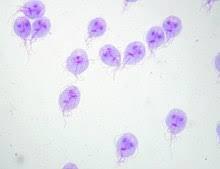
Kingdom Parabasala
(kingdom) have reduced mitochondria, hydrogenosomes, which generate some energy, anaerobically, by the release of hydrogen gas as a by-product
Kingdom Parabasala
(kingdom) includes the infamous organism, Trichomonas vaginalis
Trichomonas vaginalis
A usual inhabitant of the human vagina
Trichomonas vaginalis
overpopulation of this organism causes infection which can be passed to the sexual partner
Trichomonas vaginalis
In females, if the vagina's normal acidity is disturbed, T. vaginalis can outcompete beneficial microorganisms there and infect the vagina
Trichomonas vaginalis
Domain Eukarya
Supergroup Excavata
Kingdom Parabasala
Trichonomas vaginalis
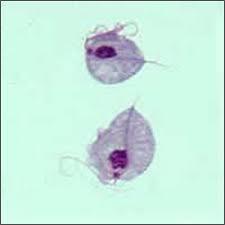
Kingdom Euglenozoa
(kingdom) have flagella containing either a spiral or crystalline rod-like structure inside each of their flagella
Kingdom Euglenozoa
(kingdom) includes predatory heterotroph, photosynthetic autotrophs, mixotrophs and parasites
Kingdom Euglenozoa
Phylum Kinetoplastida is under what Kingdom?
Phylum Kinetoplastida
(phylum) have a single, large mitochondrion, which contains an organized mass of DNA called a kinetoplast
Phylum Kinetoplastida
(phylum) includes Trypanosoma bruceii, the causative agent of sleeping sickness, carried by the tsetse fly
termite flagellates
Domain Eukarya
Supergroup Excavata
Kingdom Euglenozoa
Phylum Kinetoplastida
termite flagellates
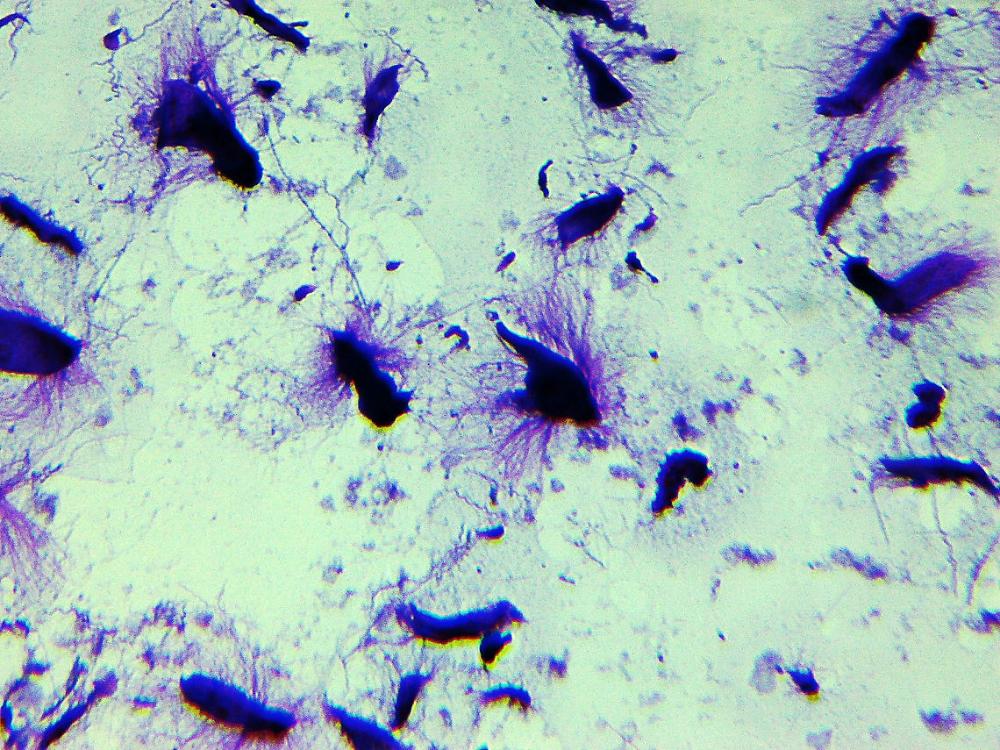
Trypanosomes
other species can cause Chagas' disease, transmitted by blood sucking insects, can lead to congestive heart failure
Trypanosoma
Domain Eukarya
Supergroup Excavata
Kingdom Euglenozoa
Phylum Kinetoplastida
Trypanosoma
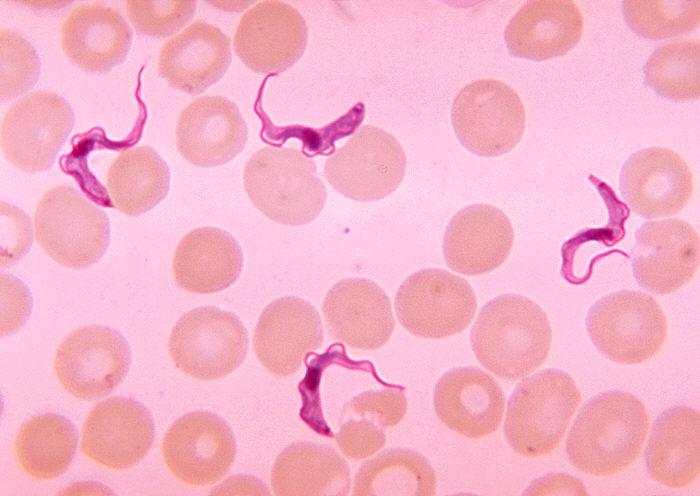
Phylum Euglenophyta
(phylum) can have 1 or 2 flagella
Phylum Euglenophyta
(phylum) some can be mixotrophs (both heterotrophic and autotrophic); they perform photosynthesis when light is available, but can go heterotrophic if light is unavailable and absorb organic molecules from their environment; some can also engulf prey via phagocytosis
A and B
Phylum Euglenophyta Chlorophylls
No
Does Phylum Euglenophyta have a cell wall?
Phylum Euglenophyta
(phylum) has pellicle to maintain shape
Phylum Euglenophyta
(phylum) divides by mitosis, but not typical; nucleolus and nuclear membrane do not disappear
Phylum Euglenophyta
(phylum) has stigma (light sensitive organelle)
Phylum Euglenophyta
(phylum) stores carbohydrate as paramylon
Pyrenoid
where paramylon is made. Found in Phylum Euglenophyta
Euglena
Domain Eukarya
Supergroup Excavata
Kingdom Euglenozoa
Phylum Euglenophyta
Euglena
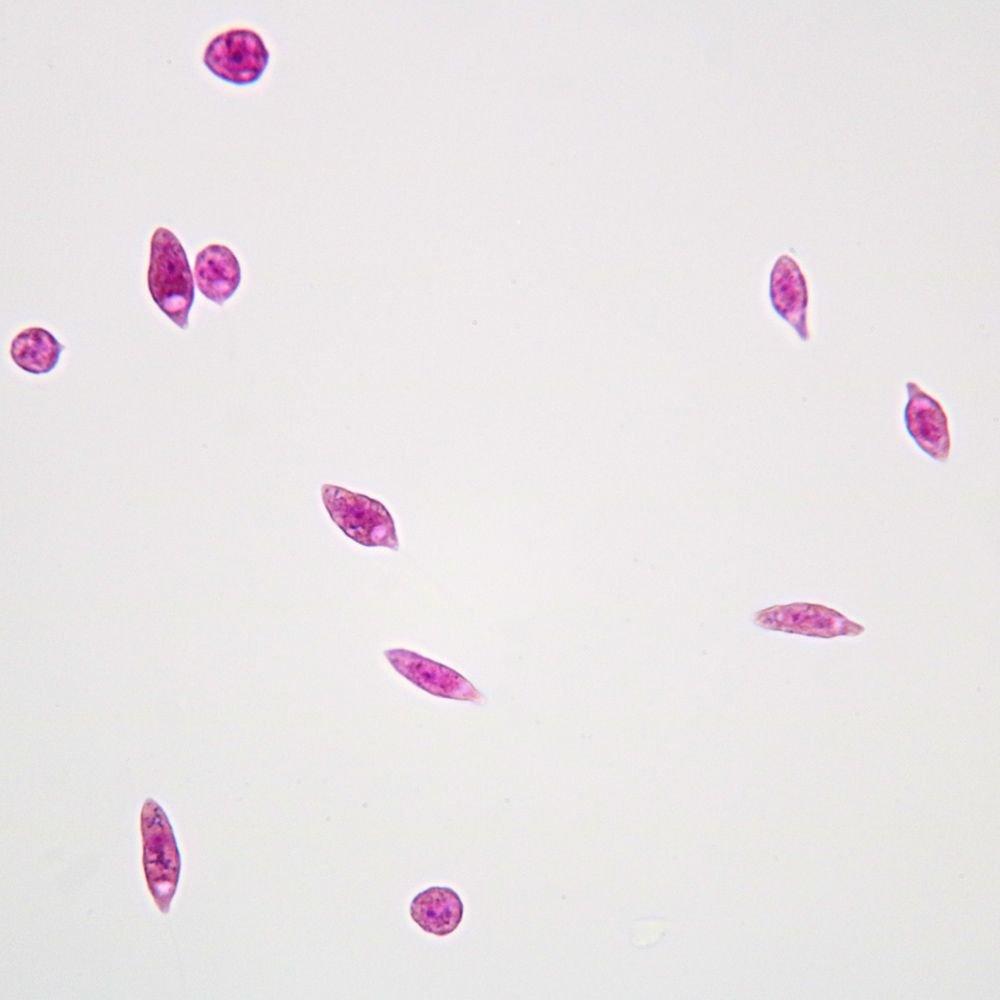
What Kingdoms are under Supergroup Chromalveolata?
Kingdom Stramenopila
Kingdom Alveolata
Phylums under Kingdom Stramenopila
-Bacillariophyta
-Chrysophyta
-Phaeophyta
-Oomycota
Kingdom Stramenopila
(kingdom) contains both autotrophs and heterotrophs
Kingdom Stramenopila
(kingdom) Name comes from file hair-like projections found on their flagella; most members have a "hairy" flagellum paired with a "smooth", shorter one
Diatoms
Phylum Bacillariophyta is also known as?
Unicellular
Phylum Bacillariophyta: Multicellular or unicellular?
Diatoms
has unique glass-like wall made of hydrated silica; wall made of two parts like bottom and top to a shoebox
Phylum Bacillariophyta
(phylum) accumulation of these in sediments are called diatomaceous earth deposits; used in many things such as toothpaste, water filters, & insulating materials
Phylum Bacillariophyta
(phylum) very abundant in oceans and lakes
Phylum Bacillariophyta
(phylum) are so abundant that their photosynthetic activity affects global carbon dioxide levels; scientists want to use diatom blooms to reduce carbon dioxide levels (carbon dioxide is kept with diatoms as they fall to ocean floor)
A and C
Phylum Bacillariophyta Chlorophylls
Diatoms
Domain Eukarya
Supergroup Chromalveolata
Kingdom Stramenopila
Phylum Bacillariophyta
Diatoms
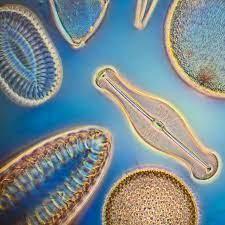
Phylum Chrysophyta is commonly called?
Golden algae
Phylum Chrysophyta
(phylum) Common name comes from the yellow & brown carotenoids
Phylum Chrysophyta
(phylum) some species can be mixotrophic (both autotrophic and heterotrophic); heterotrophically ingesting organic molecules and living cells by phagocytosis
Phylum Chrysophyta
(phylum) some species can form environmentally resistant cysts if conditions get bad; these cysts can survive for decades
A and C
Phylum Chrysophyta chlorophylls
Phylum Chrysophyta
(phylum) stores carbohydrate in the form of laminarin
Chrysophyta
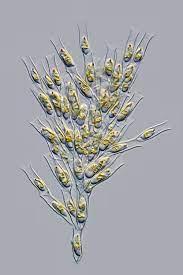
Phylum Phaeophyta is commonly called?
Brown Algae
All multicellular
Phylum Phaeophyta: Multicellular or Unicellular?
Phylum Phaeophyta
(phylum) Common along cold water currents
Phylum Phaeophyta
(phylum) used in soups
Phylum Phaeophyta
(phylum) cell walls contain algin which can be used to thicken foods like puddings, ice cream, and salad dressings
Phylum Phaeophyta
(phylum) stores carbohydrate in the form of laminarin
Phylum Phaeophyta
(phylum) cell wall of cellulose
Phylum Phaeophyta
(phylum) includes kelps (some can be as long as 60m in length)
Phaeophyta
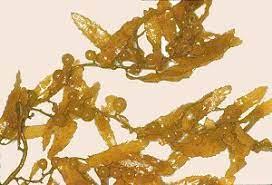
Water molds
Phylum Oomycota is commonly called?
Heterotrophic
Is Phylum Oomycota autotrophic or heterotrophic?
Phylum Oomycota
(phylum) some unicellular; others branched with hyphae (fungus-like)
Phylum Oomycota
(phylum) cell wall comprised of cellulose (plant-like); fungal cell walls are comprised of chitin
Phylum Oomycota
(phylum) diploid dominant unlike fungi (which are haploid dominant)
Phylum Oomycota
(phylum) flagellated unlike fungi
Phylum Oomycota
(phylum) reproduction includes a large egg (hence the phylum name)
Phylum Oomycota
(phylum) important in decomposition of dead stuff in water
Phylum Oomycota
(phylum) Ick belongs to this phylum; it is a parasitic water mold
Phylum Oomycota
(phylum) includes other water molds that do not live in water, such as downy mildews and white rusts (these are both plant parasites); one of these, Phytophthora infestans caused the potato famine in 1800's Ireland
Saprolegnia
Domain Eukarya
Supergroup Chromalveolata
Kingdom Stramenopila
Phylum Oomycota
Saprolegnia
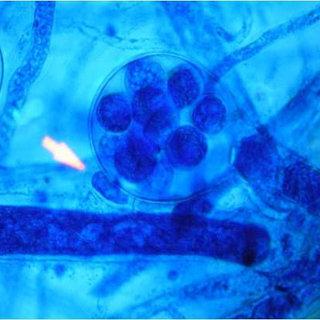
Kingdom Alveolata
(kingdom) members have membrane-enclosed sacs (alveoli) just under their plasma membranes
Kingdom Alveolata
(kingdom) found in a wide variety of habitats
Phylums under Kingdom Alveolata
-Dinoflagellata
-Apicomplexa
-Ciliophora
Phylum Dinoflagellata
(phylum) many members have cells with reinforced plates of cellulose
Phylum Dinoflagellata
(phylum) have two flagella located in grooves along their plates
Phylum Dinoflagellata
(phylum) marine and freshwater members
Phylum Dinoflagellata
(phylum) can be photosynthetic, heterotrophic, or mixotrophic
A & C
Photosynthetic forms of Phylum Dinoflagellata have which chlorophylls?
Phylum Dinoflagellata
(phylum) overabundance causes "red tides"; coloration of water comes from their pink to brownish-red carotinoids
Phylum Dinoflagellata
(phylum) cell wall of cellulose
Phylum Dinoflagellata
(phylum) some possess trichocysts (mini harpoons)
Phylum Dinoflagellata
(phylum) nucleolus and nucleus do not disappear during mitosis
Phylum Dinoflagellata
(phylum) some form symbiotic relationships with coral, called zooxanthellae
Dinoflagellates
Domain Eukarya
Supergroup Chromalveolata
Kingdom Alveolata
Phylum Dinoflagellata
Dinoflagellates
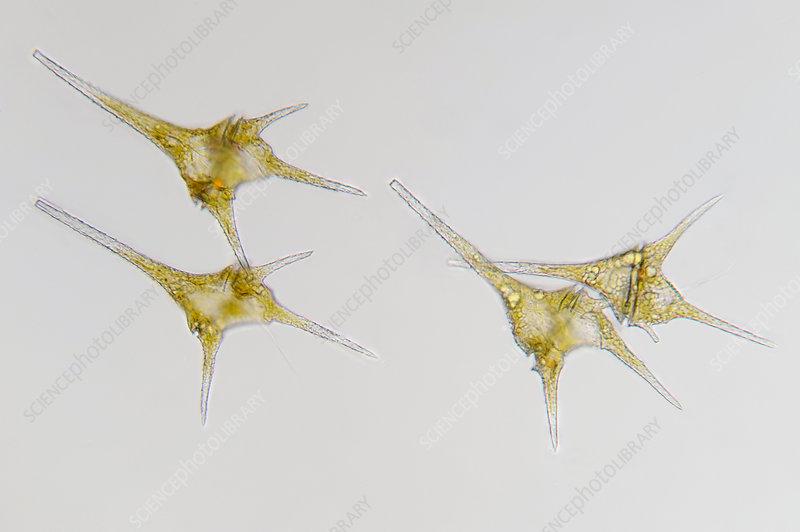
Phylum Apicomplexa
(phylum) nearly all are parasites of animals
Phylum Apicomplexa
(phylum) phylum takes its name from the apical complex of which it uses to penetrate the host's red blood cells
Phylum Apicomplexa
(phylum) all members are endoparasites
Endoparasites
Parasites that live within the body of their host instead of on the surface
Phylum Apicomplexa
(phylum) have very complex life cycles, often with several hosts, with both asexual and sexual stages
Phylum Apicomplexa
(phylum) includes Plasmodium the causative agent of malaria (transmitted via the bite of the female Anopholes mosquito)
Phylum Apicomplexa
(phylum) no organelle for movement
Plasmodium vivax
Domain Eukarya
Supergroup Chromalveolata
Kingdom Alveolata
Phylum Apicomplexa
Plasmodium vivax
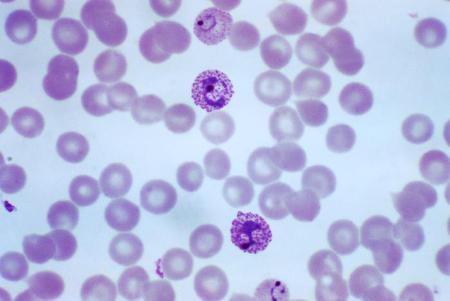
Phylum Ciliophora
(phylum) very large and diverse group which use cilia for locomotion
Phylum Ciliophora
(phylum) most are predators of bacteria or smaller protists
Phylum Ciliophora
(phylum) cilia may cover the entire surface or be clustered in rows or tufts in this phylum
Phylum Ciliophora
(phylum) unique in having two types of nuclei (macro & micro)
-macro governs activities of the cell
-micro is used during reproduction
Phylum Ciliophora
(phylum) reproduce by binary fission during which partners exchange a micro nucleus
Phylum Ciliophora
(phylum) some can contain a toxin
Phylum Ciliophora
(phylum) have an oral groove, which leads to the "place of ingestion"
Phylum Ciliophora
(phylum) have food and contractile vacuoles
Phylum Ciliophora
(phylum) has anal pore for waste discharge
Phylum Ciliophora
(phylum) have holozoic nutrition (whole prey is ingested)
Paramecium
Domain Eukarya
Supergroup Chromalveolata
Kingdom Alveolata
Phylum Ciliophora
Paramecium
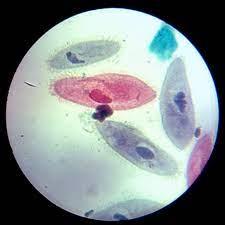
Stentor
Domain Eukarya
Supergroup Chromalveolata
Kingdom Alveolata
Phylum Ciliophora
Stentor
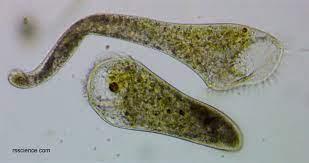
Phylums of Kingdom Cercozoa
-Radiolaria
-Foraminifera
Phylum Radiolaria
(phylum) movement is via axopodia (their pseudopodia); these structures help them float and feed
Phylum Radiolaria
(phylum) has silica in its internal skeleton comprised of silica (gives them a glass-like appearance)
Phylum Radiolaria
(phylum) Lives in marine waters
Radiolaria
Domain Eukarya
Supergroup Rhizaria
Kingdom Cercozoa
Phylum Radiolaria
(If it looks really beautiful it's probably this)
Radiolaria
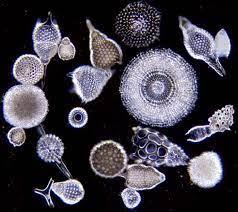
Phylum Foraminifera
(phylum) name means to bear pores
Phylum Foraminifera
(phylum) shells are called "tests" which are single pieces of organic material, hardened with calcium carbonate
Phylum Foraminifera
(phylum) marine & fresh water
most live in sand or can attach themselves to rocks or algae
Phylum Foraminifera
(phylum) many derive nutrients from symbiotic algae
Phylum Foraminifera
(phylum) formed White Cliffs of Dover; limestone; flint
Foraminifera
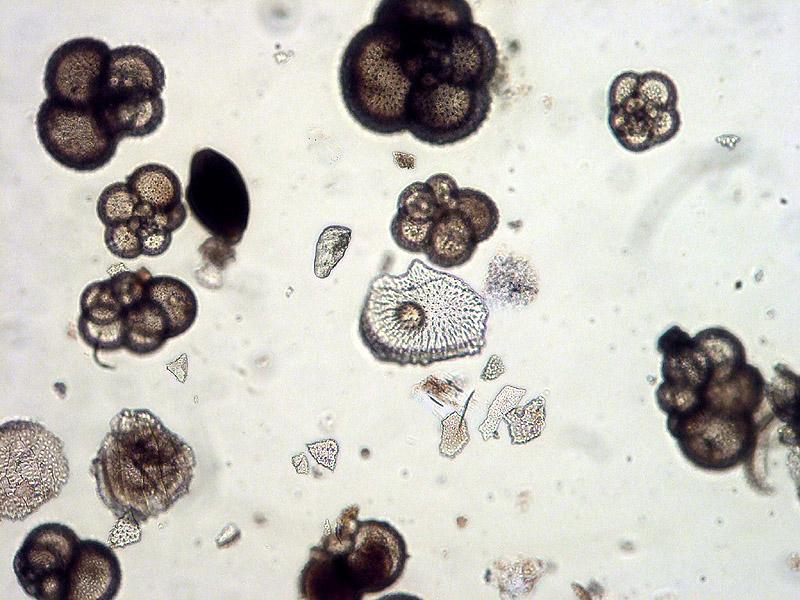
Kingdom under Supergroup Rhizaria
Cercozoa
Kingdom Cercozoa
(kingdom) thread like pseudopodia
Kingdom Cercozoa
(kingdom) marine and fresh water, soil
Kingdom Cercozoa
(kingdom) Most are heterotrophic
Kingdom Cercozoa
(kingdom) Many are plant, animal, or protist parasites
Kingdoms of Supergroup Archaeplastida
-Rhodophyta
-Chlorophyta
Red algae
Kingdom Rhodophyta common name?
Kingdom Rhodophyta
(kingdom) red coloration is from phycoerythrin, which masks the green of the chlorophyll
Kingdom Rhodophyta
(kingdom) colors can range from greenish-red in shallow water to bright red in medium depths to nearly black at deep depths
A & D
Kingdom Rhodophyta chlorophylls
Kingdom Rhodophyta
(kingdom) stores carbohydrate as Floridian starch
Kingdom Rhodophyta
(kingdom) unlike other algal species, this Kingdom does not have flagellated gametes; water currents must move them.
Kingdom Rhodophyta
(kingdom) some can be heterotrophic and parasitize other red algae
Kingdom Rhodophyta
(kingdom) some contain calcium carbonate walls and are found on reefs (coralline algae)
Kingdom Rhodophyta
(kingdom) Nonmotile male gametes called spermatia - Most are marine algae
Kingdom Rhodophyta
(kingdom) agar (for bacterial plates) comes from here; carrageenan (thickener for items such as ice cream). Also used in sushi wrapping
Rhodophyta (microscope)
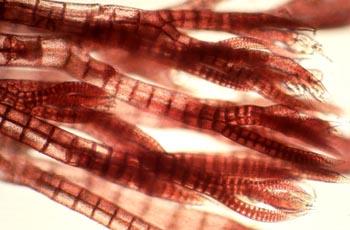
Rhodophyta (regular)
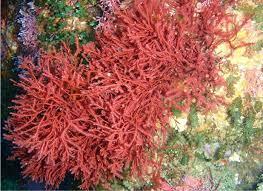
Green algae
Kingdom Chlorophyta common name?
Kingdom Chlorophyta
(kingdom) chloroplasts are very similar to those of land plants
Kingdom Chlorophyta
(kingdom) some systematists advocate the move of this group to an expanded plant kingdom, Viridiplantae
Kingdom Chlorophyta
(kingdom) mostly fresh water, but some are marine or even terrestrial
Starch
Carbohydrate storage form in Chlorophyta is
Cellulose
Cell walls in Chlorophyta are made up of
A & B
What Chlorophylls are present in Chlorophyta?
Kingdom Chlorophyta
(kingdom) most have complex life cycles with both asexual and sexual stages
Kingdom Chlorophyta
(kingdom) larger size and greater complexity evolved in the chlorophytes by three different mechanisms
Kingdom Chlorophyta
(kingdom) Formation of colonies of individual cells, as seen in Volvox, and filamentous forms that make stringy masses known as pond scum
Kingdom Chlorophyta
(kingdom) Production of true multicellular bodies by cell division and differentiation, as in Ulva
Kingdom Chlorophyta
(kingdom) Repeated karyokinesis without cytokinesis, as seen with Caulerpa
Chlorophyta
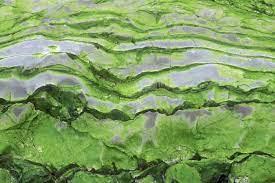
Chlamydomonas
Domain Eukarya
Supergroup Archaeplastida
Kingdom Chlorophyta
Chlamydomonas
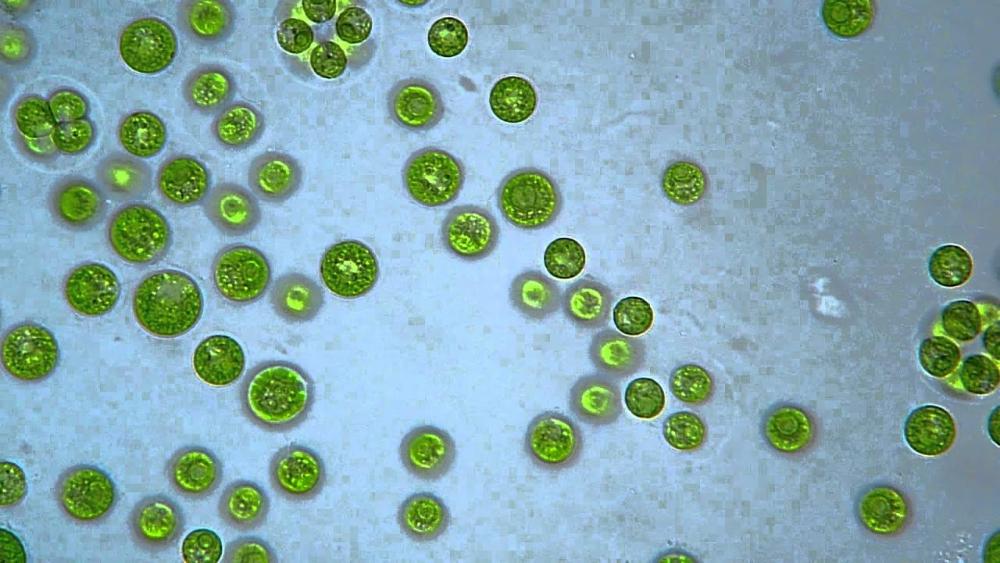
Gonium
Domain Eukarya
Supergroup Archaeplastida
Kingdom Chlorophyta
Gonium
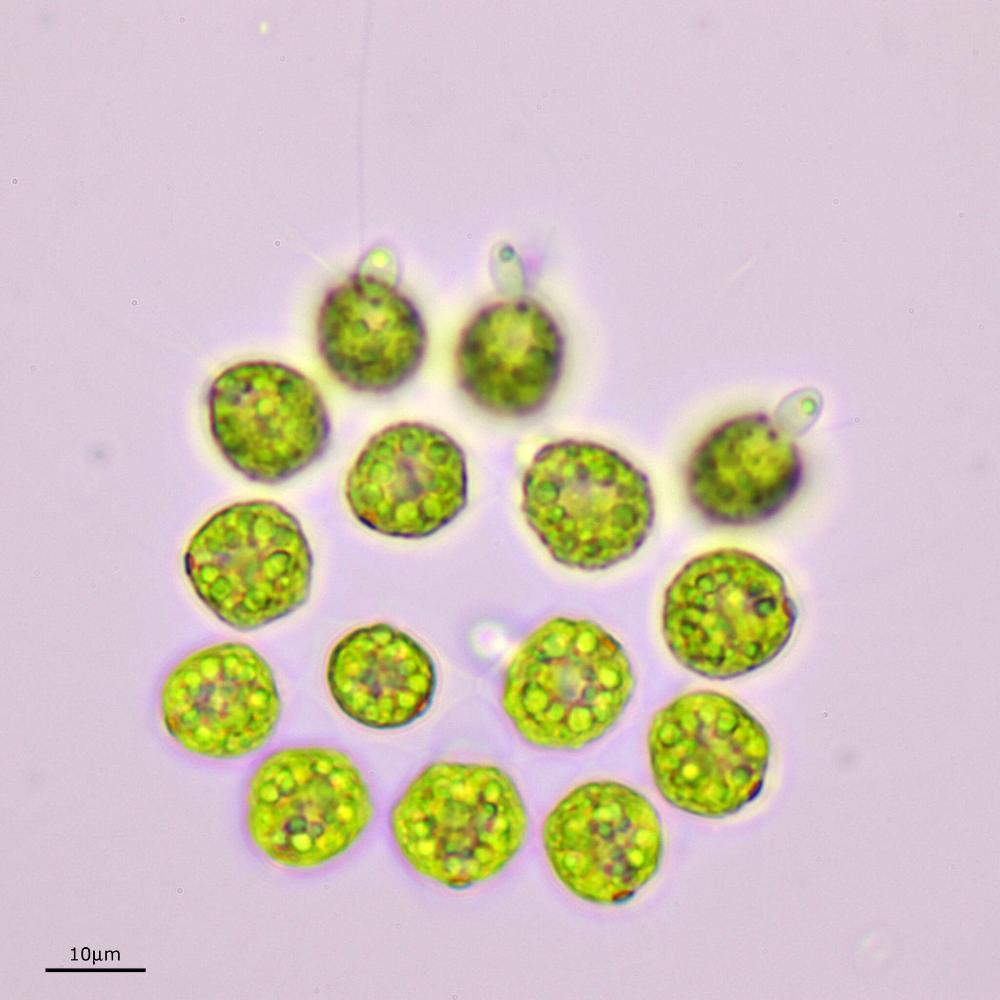
Eudorina
Domain Eukarya
Supergroup Archaeplastida
Kingdom Chlorophyta
Eudorina
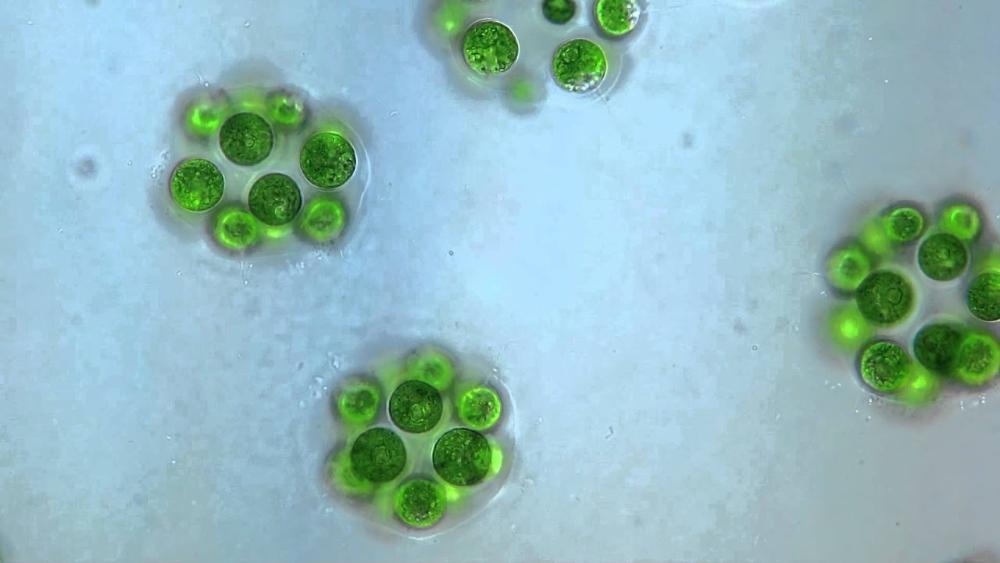
Volvox
Domain Eukarya
Supergroup Archaeplastida
Kingdom Chlorophyta
Volvox
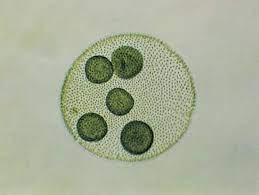
Spirogyra
Domain Eukarya
Supergroup Archaeplastida
Kingdom Chlorophyta
Spirogyra
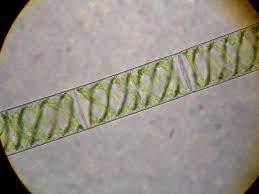
Ulothrix
Domain Eukarya
Supergroup Archaeplastida
Kingdom Chlorophyta
Ulothrix
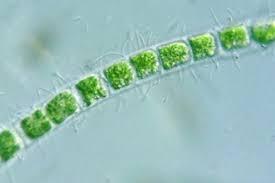
Supergroup Unikonta Kingdoms
Kingdom Amoebozoa
Kingdom Amoebozoa Phylums
-Myxogastria
-Dictyostelida
-Gymnamoeba
-Entamoeba
Phylum Myxogastrida is commonly known as?
plasmodial slime molds
Phylum Myxogastrida
(phylum) once thought to be fungi, but relationship to them is via convergent evolution
Convergent Evolution
did not arise from common ancestor, but rather have similar characteristics dictated by a similar niche in the environment
Phylum Myxogastrida
(phylum) they progress from a large, coenocytic (many nuclei per cell) mass called a plasmodium; a multinucleated mass with continuous cytoplasm, unbound by membranes or walls
usually diploid
Is Phylum Myxogastrida haploid or diploid?
Phylum Myxogastrida appearance
(phylum) usually brightly, colored yellow or orange
Phylum Myxogastrida
(phylum) can be found growing through leaf mulch, rotten logs, & moist soil
cellular slime molds
Phylum Dictyostelida is commonly known as?
Phylum Dictyostelida
(phylum) unique group of social amoebae that exhibit a fascinating life cycle, which involves both unicellular and multicellular stages.
Phylum Dictyostelida
(phylum) move using temporary extensions of their cell membrane called pseudopodia
Phylum Dictyostelida
(phylum) feeding stage consists of solitary cells (unlike the plasmodial slime mold)
Phylum Dictyostelida
(phylum) When food is abundant, they exist as individual, free-living amoeboid cells.
Phylum Dictyostelida
(phylum) When food becomes scarce, the individual cells aggregate together to form multicellular structures known as "slugs."
Phylum Dictyostelida
(phylum) During the aggregation phase, thousands of individual cells come together and move as a collective mass. This process is crucial for the survival of the population as a whole.
Tubulinids
Phylum Gymnamoeba is also known as
Phylum Gymnamoeba
(phylum) comprises a large and diverse group of amoebozoans
Phylum Gymnamoeba
(phylum) ubiquitous in soil, fresh & marine waters
Phylum Gymnamoeba
(phylum) most are heterotrophic, actively seeking to consume bacteria and other protists though some feed on detritus (non-living organic matter)
Phylum Entamoeba
(phylum) includes an all-parasitic genus, Entamoeba; infects all classes of vertebrates and some invertebrates
Phylum Entamoeba
(phylum) includes E. histolytica, the causative agent of amoebic dysentery; spread via contaminated drinking water; 3rd leading cause of death from parasites after malaria & schistosomiasis
Amoeba
Domain Eukarya
Supergroup Unikonta
Kingdom Amoebazoa
Phylum Gymnamoeba
Amoeba
